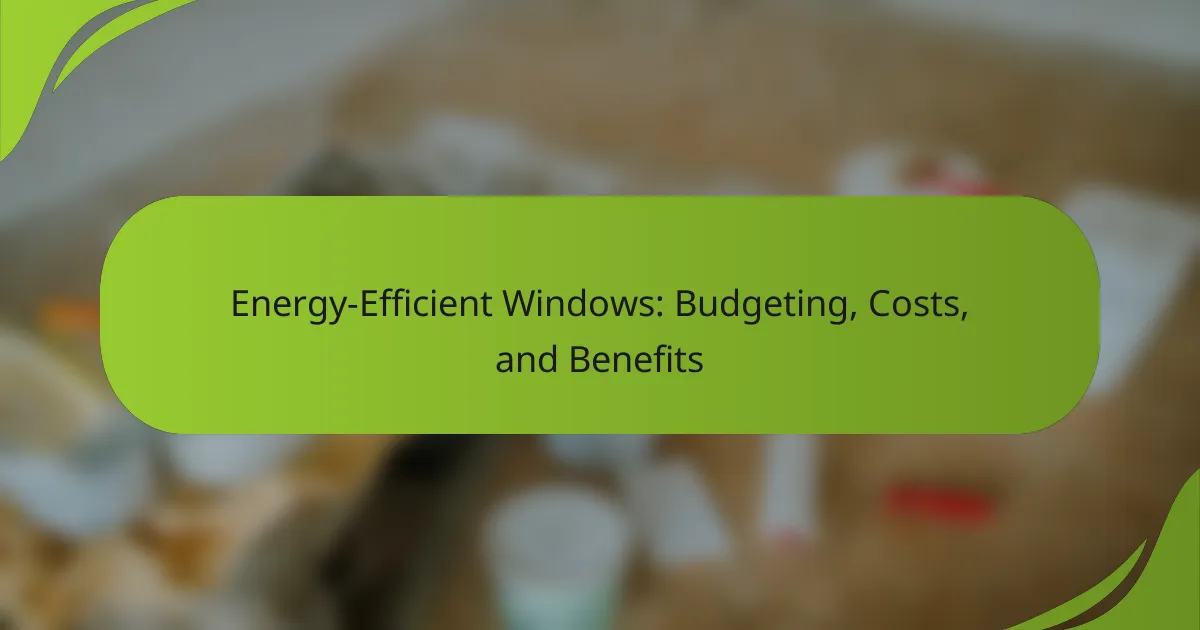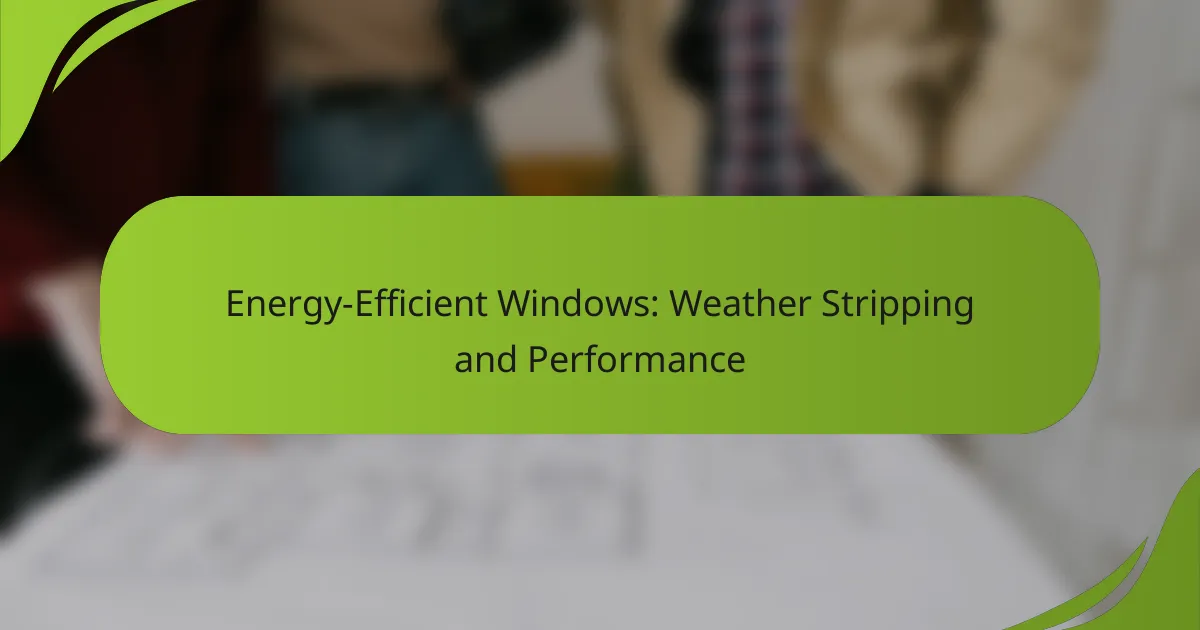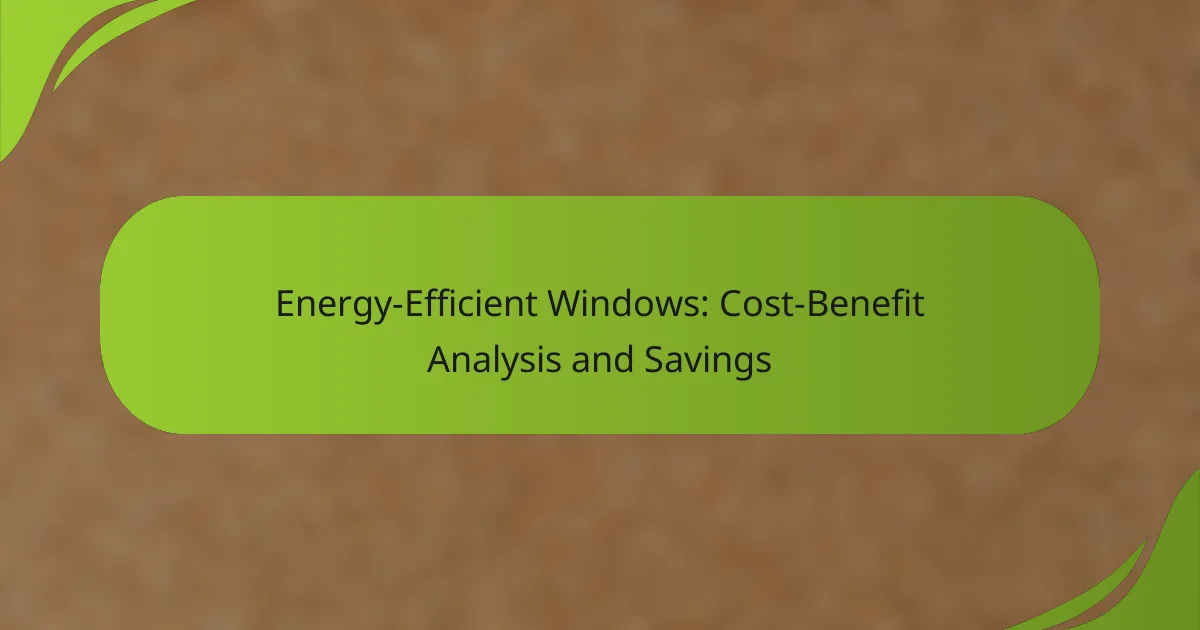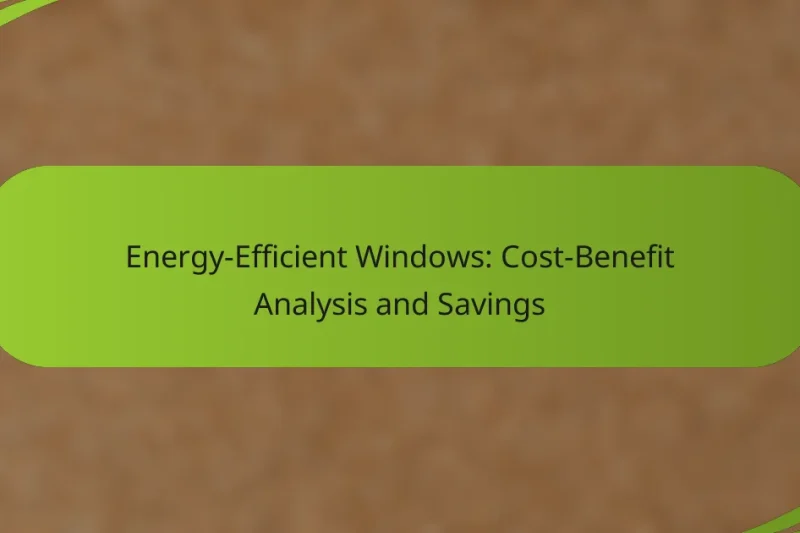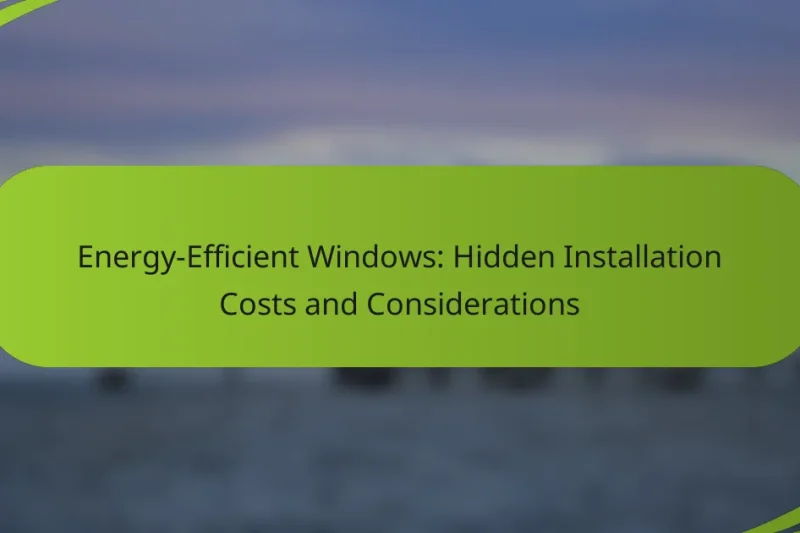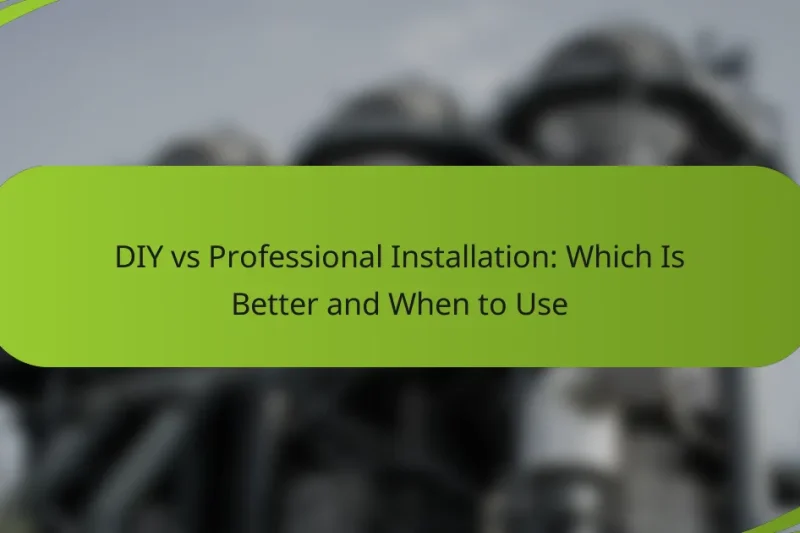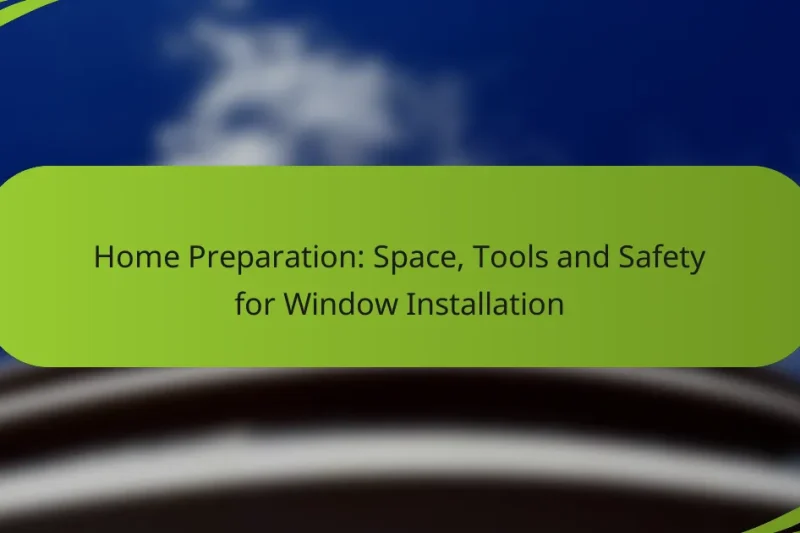Energy-efficient windows are designed to minimize heat transfer, providing homeowners with significant benefits such as lower … Energy-Efficient Windows: Efficiency Ratings, Standards and Homeowner InsightsRead more
Energy-efficient windows are essential for enhancing home comfort while reducing energy costs. Options such as double-glazed, low-E glass, and various frame materials offer unique benefits that improve insulation and minimize heat transfer. By investing in these windows, homeowners can enjoy lower energy bills and potentially increase their property's value.
Energy-Efficient Windows: Budgeting, Costs, and Benefits
Investing in energy-efficient windows can lead to substantial savings on energy bills while enhancing the comfort … Energy-Efficient Windows: Budgeting, Costs, and BenefitsRead more
Energy-Efficient Windows: Weather Stripping and Performance
Energy-efficient windows play a crucial role in enhancing insulation and reducing heating costs, particularly in cold … Energy-Efficient Windows: Weather Stripping and PerformanceRead more
Energy-Efficient Windows: Cost-Benefit Analysis and Savings
Energy-efficient windows offer homeowners a practical solution to reduce energy costs while enhancing comfort and increasing … Energy-Efficient Windows: Cost-Benefit Analysis and SavingsRead more
Contractor Selection: Experience, Reviews and Pricing for Window Projects
Selecting the right contractor for window projects in Los Angeles requires careful consideration of their experience, … Contractor Selection: Experience, Reviews and Pricing for Window ProjectsRead more
Energy-Efficient Windows: Hidden Installation Costs and Considerations
When considering energy-efficient windows, it’s essential to be aware of hidden installation costs that can affect … Energy-Efficient Windows: Hidden Installation Costs and ConsiderationsRead more
Best Window Types for Cold Climates: Insulation, Durability and Aesthetics
When selecting windows for cold climates, it’s essential to prioritize insulation, durability, and aesthetics. Double-pane and … Best Window Types for Cold Climates: Insulation, Durability and AestheticsRead more
Energy-Efficient Windows: Market Value, Savings and Incentives
Energy-efficient windows provide homeowners in the United States with substantial benefits, including reduced energy costs, improved … Energy-Efficient Windows: Market Value, Savings and IncentivesRead more
DIY vs Professional Installation: Which Is Better and When to Use
When deciding between DIY and professional installation, it’s essential to weigh the benefits of each approach. … DIY vs Professional Installation: Which Is Better and When to UseRead more
Home Preparation: Space, Tools and Safety for Window Installation
Preparing for window installation requires careful attention to space, tools, and safety measures. Clear the installation … Home Preparation: Space, Tools and Safety for Window InstallationRead more
What are the best energy-efficient window options in the US?
The best energy-efficient window options in the US include double-glazed windows, low-E glass windows, vinyl frame windows, wood-clad windows, and fiberglass windows. Each type offers unique benefits that can enhance insulation, reduce energy costs, and improve comfort in homes.
Double-glazed windows
Double-glazed windows consist of two panes of glass separated by a space filled with gas, typically argon or krypton, which enhances insulation. This design significantly reduces heat transfer, keeping homes warmer in winter and cooler in summer. Homeowners can expect energy savings of 10-25% compared to single-pane windows.
When considering double-glazed windows, look for those with a low U-factor, which indicates better insulation performance. Installation can be more expensive than single-pane options, but the long-term savings on energy bills often justify the initial investment.
Low-E glass windows
Low-E glass windows have a special coating that reflects infrared light while allowing visible light to pass through. This coating helps maintain indoor temperatures by minimizing heat loss in winter and reducing heat gain in summer. Low-E glass can improve energy efficiency by up to 30% compared to standard glass.
When selecting Low-E windows, check for the Solar Heat Gain Coefficient (SHGC) rating, which indicates how much solar heat enters through the glass. A lower SHGC is preferable for warmer climates, while a higher rating may be beneficial in cooler areas.
Vinyl frame windows
Vinyl frame windows are made from polyvinyl chloride (PVC) and are known for their durability and low maintenance. They provide excellent insulation and are resistant to moisture, making them a popular choice for energy efficiency. Vinyl frames can help reduce energy costs by preventing drafts and heat loss.
When choosing vinyl windows, ensure they have a multi-chambered frame design, which enhances insulation. Look for Energy Star certification to ensure compliance with energy efficiency standards.
Wood-clad windows
Wood-clad windows feature a wooden interior for aesthetic appeal and a durable exterior made from materials like fiberglass or aluminum. This combination offers the warmth of wood while providing protection against the elements, contributing to energy efficiency. They can help reduce heating and cooling costs significantly.
Consider wood-clad windows if you prioritize aesthetics and are willing to invest in maintenance for the wooden parts. Ensure that the exterior cladding is weather-resistant to prolong the lifespan of the windows.
Fiberglass windows
Fiberglass windows are made from glass fibers and resin, offering exceptional strength and insulation. They are highly energy-efficient, often outperforming vinyl and wood in terms of thermal performance. Fiberglass windows can last longer and require less maintenance than other materials.
When selecting fiberglass windows, look for those with a high R-value, indicating better insulation. Although they may have a higher upfront cost, their durability and energy savings can make them a cost-effective choice over time.
How do energy-efficient windows save money?
Energy-efficient windows save money by reducing heating and cooling costs, increasing home value, and providing access to tax credits and rebates. These windows are designed to minimize heat transfer, which leads to lower energy bills over time.
Lower heating and cooling costs
Energy-efficient windows help maintain a consistent indoor temperature, which reduces the need for heating in winter and cooling in summer. This efficiency can lead to savings of 10-25% on energy bills, depending on your climate and the type of windows installed.
When selecting windows, look for those with a low U-factor and high solar heat gain coefficient (SHGC). These ratings indicate better insulation and energy performance, which directly impacts your monthly expenses.
Increased home value
Installing energy-efficient windows can enhance your home's market value. Potential buyers often prioritize energy efficiency, making homes with these features more attractive.
Studies suggest that homes with energy-efficient upgrades can sell for 5-15% more than similar homes without them. This increase in value can offset the initial investment in new windows, making it a financially sound decision.
Tax credits and rebates
Homeowners may qualify for tax credits and rebates when they install energy-efficient windows. These incentives can significantly reduce the overall cost of the upgrade, making it more affordable.
Check with local and federal programs, as they often offer varying levels of support. For example, the U.S. federal government has provided tax credits for energy-efficient home improvements, which can cover a portion of the installation costs.
What are the features of energy-efficient windows?
Energy-efficient windows are designed to minimize heat loss and gain, enhancing comfort and reducing energy costs. Key features include superior insulation, optimal solar heat gain coefficients, and low air leakage ratings.
Insulation properties
Insulation properties refer to a window's ability to resist heat transfer. Windows with multiple panes, such as double or triple glazing, provide better insulation than single-pane options. Look for windows with low U-values, which indicate lower heat loss; values typically range from 0.20 to 0.30 for energy-efficient models.
Additionally, the use of gas fills like argon or krypton between panes can further improve insulation. When selecting windows, consider those with insulated frames, as they can significantly enhance overall thermal performance.
Solar heat gain coefficient
The solar heat gain coefficient (SHGC) measures how much solar radiation passes through a window. A lower SHGC value indicates less solar heat gain, making it ideal for warmer climates. Values generally range from 0.25 to 0.60, allowing homeowners to choose based on their local climate needs.
For example, in sunny regions, windows with a lower SHGC can help keep indoor spaces cooler, while in colder areas, a higher SHGC can be beneficial to harness solar warmth during winter months. Always consider the orientation of your windows when selecting SHGC ratings.
Air leakage ratings
Air leakage ratings indicate how much air can pass through a window frame and sash. Lower air leakage ratings are crucial for energy efficiency, as they prevent drafts and heat loss. Look for windows with ratings of 0.3 or lower, which are considered high-performing.
To ensure optimal performance, check for proper installation, as even the best windows can underperform if not fitted correctly. Regular maintenance, such as resealing or replacing weatherstripping, can also help maintain low air leakage over time.
What are the installation costs for energy-efficient windows?
The installation costs for energy-efficient windows typically range from several hundred to over a thousand dollars per window, depending on various factors. Homeowners should consider both the initial investment and the potential long-term savings on energy bills when evaluating these options.
Average cost per window
The average cost per energy-efficient window can vary significantly, generally falling between $300 and $1,000 each. This price range often includes both the window itself and the installation fees. Higher-end models with advanced features may exceed this range, particularly if custom sizes or styles are chosen.
Factors affecting installation costs
<pSeveral factors influence the installation costs of energy-efficient windows. These include the type of window frame material (vinyl, wood, or fiberglass), the complexity of the installation, and whether any additional structural modifications are needed. Geographic location can also play a role, as labor costs and local regulations vary widely.Cost comparison by window type
<pWhen comparing costs by window type, vinyl windows are often the most affordable option, typically ranging from $300 to $600. Wood windows, while aesthetically pleasing, can cost between $600 and $1,200 due to their higher material costs and maintenance needs. Fiberglass windows generally fall in the mid-range, offering durability and energy efficiency at prices around $500 to $1,000.How to choose energy-efficient windows?
Choosing energy-efficient windows involves assessing their insulation properties, energy ratings, and suitability for your local climate. Look for features like double or triple glazing, low-emissivity (Low-E) coatings, and proper framing materials to enhance energy savings.
Energy Star certification
Energy Star certification indicates that windows meet strict energy efficiency guidelines set by the U.S. Environmental Protection Agency. Certified windows typically offer improved insulation and reduced energy costs, making them a reliable choice for homeowners looking to save on heating and cooling expenses.
When selecting windows, check for the Energy Star label, which can help you identify products that perform well in your specific climate zone. This certification can lead to significant savings on energy bills, often ranging from 10% to 30% annually.
Local climate considerations
Your local climate plays a crucial role in determining the best type of energy-efficient windows. For example, in colder regions, windows with higher insulation values are essential to minimize heat loss, while warmer climates may benefit from windows that reflect heat.
Consider the orientation of your home as well. South-facing windows can harness solar energy in winter, while overhangs or shades can prevent overheating in summer. Tailoring your window choice to local weather patterns can enhance comfort and efficiency.
Window frame material options
The material of your window frame significantly affects energy efficiency. Common options include vinyl, wood, aluminum, and fiberglass, each with distinct thermal performance and maintenance needs. Vinyl frames are often favored for their insulation properties and low maintenance, while wood offers natural aesthetics but may require more upkeep.
Aluminum frames are durable but can conduct heat, making them less efficient unless they have thermal breaks. Fiberglass frames provide excellent insulation and durability, though they may come at a higher cost. Weigh the pros and cons of each material based on your budget and climate to make an informed decision.
What are the benefits of energy-efficient windows?
Energy-efficient windows provide significant advantages, including reduced energy costs and improved comfort. They minimize heat loss in winter and keep homes cooler in summer, leading to a more stable indoor climate.
Lower energy bills
By using energy-efficient windows, homeowners can expect to see a noticeable decrease in their energy bills. These windows are designed to reduce the amount of heat that escapes during colder months and limit heat gain during warmer months, which can lead to savings of 10-25% on heating and cooling costs.
For example, double or triple-pane windows with low-emissivity (Low-E) coatings can significantly enhance insulation. This means your heating and cooling systems do not have to work as hard, resulting in lower utility expenses.
Increased comfort
Energy-efficient windows contribute to a more comfortable living environment by maintaining consistent indoor temperatures. They help eliminate drafts and cold spots near windows, making spaces more enjoyable year-round.
Additionally, these windows can reduce glare and UV exposure, protecting furniture and flooring from fading. Homeowners often find that rooms with energy-efficient windows feel more pleasant and inviting.
Environmental impact
Choosing energy-efficient windows can also have a positive effect on the environment. By reducing energy consumption, these windows help lower greenhouse gas emissions associated with electricity generation.
In many regions, energy-efficient windows are encouraged through various incentives and rebates, making them a sustainable choice for eco-conscious homeowners. This not only benefits the planet but can also enhance the resale value of your home.

